13.04.2018
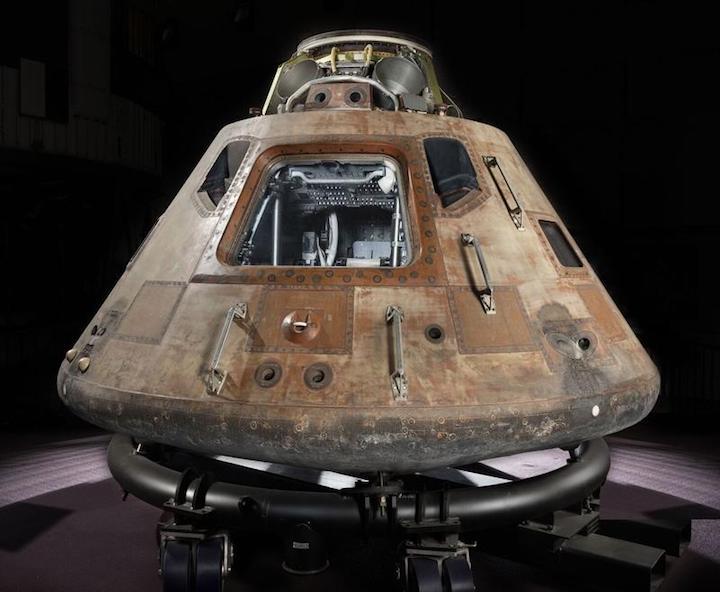
The Apollo 11 command module Columbia will be on display at the St. Louis Science Center.
-
A treasure trove of invaluable artifacts from the space race will be on display at the St. Louis Science Center.
“Destination Moon: The Apollo 11 Mission,” a traveling exhibition from the Smithsonian’s National Air and Space Museum, opens Saturday in St. Louis.
The crown jewel of the exhibition is the command module Columbia, which carried astronauts Neil Armstrong, Buzz Aldrin and Michael Collins to the moon in 1969.
“I think the people will love it,” said Christian Greer, chief officer for science, education and experience at the St. Louis Science Center. “It’s an immersive exhibit, an exciting exhibit and one with historical significance in St. Louis.”
The immersive experiences include a St. Louis-themed street that contains space artifacts from the 1960s as well as a mock living room that transports visitors back in time to a launch and landing television viewing party.
St. Louis is a fitting place to be one of only four cities nationwide to host the exhibit. St. Louis’ McDonnell Aircraft, before it merged with Douglas Aircraft Company, played an astronomical role in the pre-Apollo 11 missions of Projects Mercury and Gemini.
“McDonnell [Aircraft] did a wonderful job on Mercury and Gemini and they really set up the whole space program for NASA,” explained Henry Brownlee Jr., who joined Greer as guests on Wednesday’s St. Louis on the Air. Brownlee is manager of historical services at Boeing, which merged with McDonnell Douglas in 1997.
Brownlee explained that Boeing is engaged in the future of space travel.
“Boeing is involved in what’s called the Space Launch System, that is the [rocket] that will take the Orion and any other capsule either to Mars or to the moon. Boeing is working on that – not in St. Louis – but they are working on that,” he said.
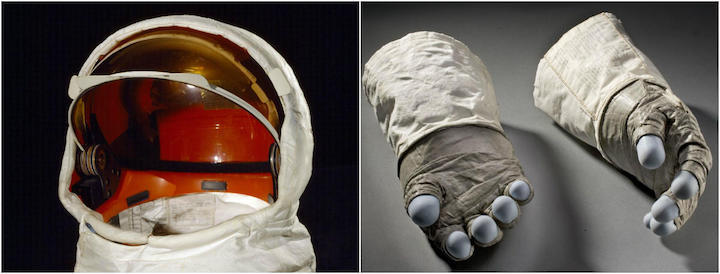
The extravehicular (EV) visor and gloves made for and worn by astronaut Buzz Aldrin, lunar module pilot of the Apollo 11 mission in July, 1969.
-
In addition to the Columbia module, other relics from the Apollo 11 mission will include Buzz Aldrin’s visor and gloves he wore while on the surface of the moon as well as a star chart that shows the positions of the sun, moon and stars at the time of the mission.
Already on display at the science center and on loan from the Smithsonian are Mercury and Gemini trainer capsules that were built in St. Louis.
“So this is kind of interesting in that we have the Mercury, Gemini and Apollo in one facility,” said Greer.
+++
The Saint Louis Science Center is one of four science museums nationwide that will host Destination Moon: The Apollo 11 Mission, an exhibition from the Smithsonian Institution Traveling Exhibition Service and the Smithsonian’s National Air and Space Museum in Washington, D.C.
The special exhibition will feature the Apollo 11 command module Columbia, marking the first time in 46 years it has left the museum. Destination Moon will be at the Science Center from April 14 to Sept. 3, 2018. The 49th anniversary of the moon landing is July 20, 2018.
FEATURED ARTIFACTS
The special exhibition will feature the Apollo 11 command module Columbia, the only portion of the historic spacecraft to complete the first mission to land men on the Moon and safely return him to Earth, as well as more than 20 one-of-a-kind artifacts from the historic mission, including:
Apollo 11: The interior of the Apollo 11 Command Module.
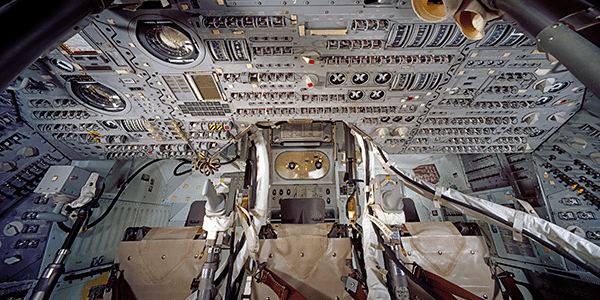
Star Chart: This chart shows the positions of the Sun, Moon, and stars at the time Apollo 11 was scheduled to leave Earth orbit and head for the Moon.
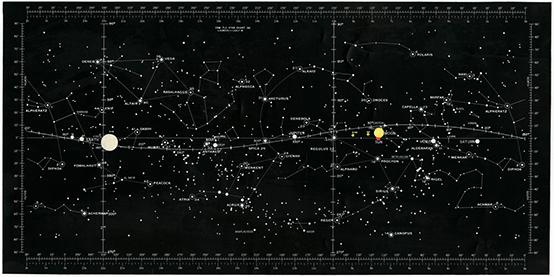
Rucksack #1, Survival Kit: One of two rucksacks filled with equipment to help the crew survive for up to 48 hours in the event of an emergency landing somewhere on Earth. The kit includes three water containers, a radio beacon and spare battery, three pairs of sunglasses, six packages of desalting chemicals, a seawater desalter kit, two survival lights, a machete and two bottles of sunscreen.
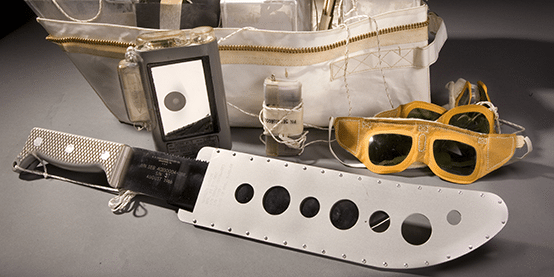
Aldrin’s Extravehicular Visor: Buzz Aldrin wore this outer helmet while on the surface of the Moon. It fitted over his clear pressure-bubble helmet.
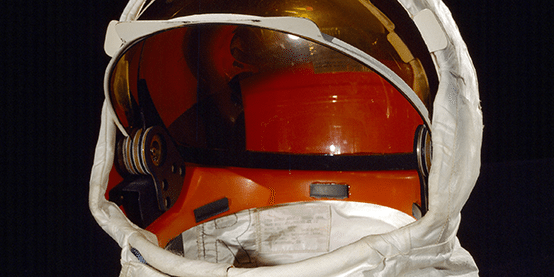
Aldrin’s Extravehicular Gloves: These gloves have an outer, cut-resistant shell of Chromel-R fabric across the hands to prevent fatal air leaks caused by handling sharp objects and gauntlets to protect against solar heating. The blue fingertips were made of silicone rubber to provide more sensitivity for touching.
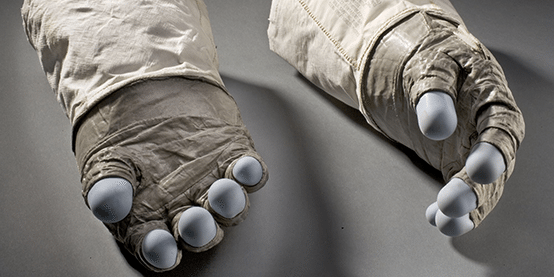
For more information on this exhibition, visit the Smithsonian website.
BRING YOUR GROUP TO DESTINATION MOON: THE APOLLO 11 MISSION
Bring your group to the Saint Louis Science Center for Destination Moon: The Apollo 11 Mission, featuring the iconic command module, Columbia, on its first tour in more than 46 years. The Science Center is one of just four institutions in the country to host the exhibition.
In addition to the Columbia command module, the exhibition highlights artifacts from the historic mission that landed man on the moon. Groups will have the thrilling opportunity to see the artifacts up close. In addition, the Science Center will share the vital role St. Louis played in the Space Race.
Fill out our online form or contact our Group Sales Manager at 314.289.1419 to find out more about discounts for groups of 10 or more or to reserve your tickets.
Bring Destination Moon: The Apollo 11 Mission to life with educational programming that your group will remember for a lifetime! In our field trip package, your group can jump into your spacesuits and help our astronauts build a better lunar buggy. This is a great way to introduce new topics, enhance your classroom curriculum and have fun exploring the moon and space! For more information, check out the Science Center’s field trips.
This is a once-in-a-lifetime opportunity for groups to see the command module outside of Washington, D.C. and a special exhibition you won’t want to miss.
Quelle: Saint Louis Science Center., St.Louis PublicRadio
